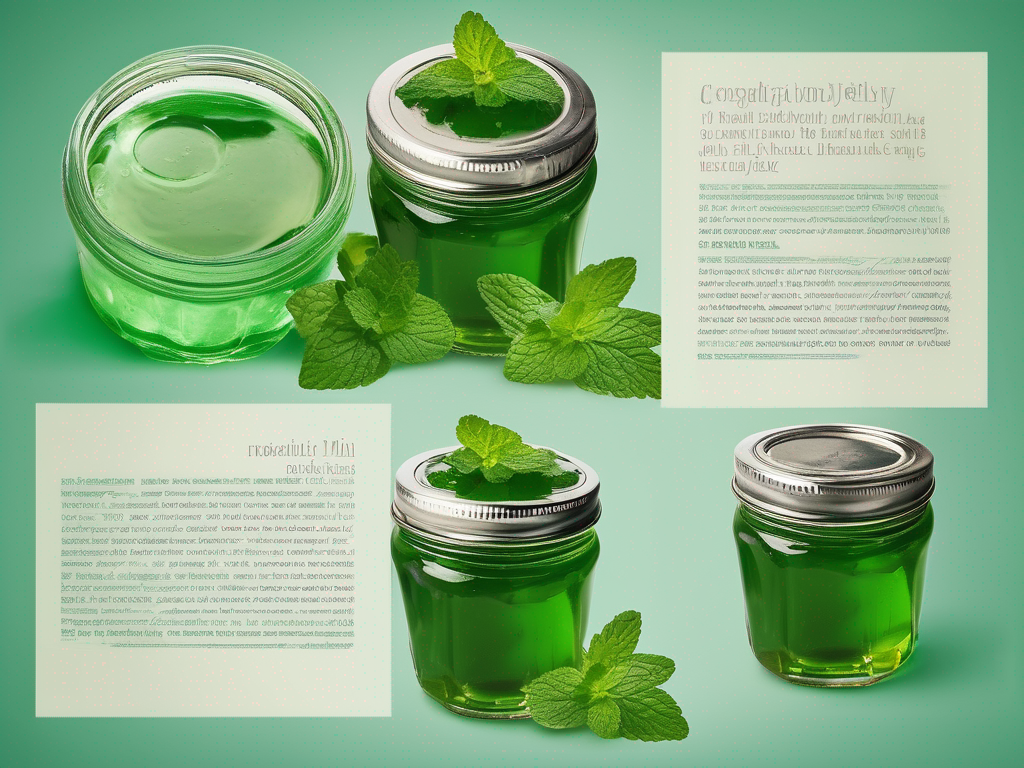
Signs that Mint Jelly Commercially Jarred Opened has Gone Bad
Get Your Free Food Safety Cheat Sheet
30 most common foods with instant answers. Print it and stick it on your fridge—completely free!
Signs that Mint Jelly Commercially Jarred Opened has Gone Bad
When it comes to enjoying the delightful flavor of mint jelly, nothing is worse than discovering that the jar you opened has gone bad. As a food safety expert, I'm here to guide you through the signs that indicate your commercially jarred opened mint jelly may have spoiled. By being aware of these indicators, you can ensure that your mint jelly is safe to consume and enjoy its freshness to the fullest. (Mint jelly commercially jarred opened)
Understanding Mint Jelly
Before diving into the signs of spoilage, let's take a moment to appreciate the delightful essence of mint jelly. Mint jelly is a sweet and tangy condiment made from mint leaves, sugar, and vinegar. It is commonly used as a refreshing accompaniment to lamb dishes, roasted vegetables, and even desserts.
Commercially jarred mint jelly is processed and sealed to maintain its quality and freshness. However, like any food product, it can still deteriorate over time if not stored properly or if exposed to unfavorable conditions.
Signs that Mint Jelly has Gone Bad
1. Check the Jar's Appearance
- Mold or discoloration: Any visible mold growth or unusual discoloration on the surface of the mint jelly indicates spoilage.
- Cloudy or slimy texture: If the jelly appears cloudy or has a slimy texture, it is a clear sign that it has gone bad.
2. Smell Test
- Foul odor: Fresh mint jelly has a pleasant aroma of mint and sweetness. If you detect any off-putting or sour smell, it is a strong indicator that the jelly has spoiled.
3. Taste Examination
- Off taste: When tasting the mint jelly, if you notice a sharp or bitter flavor that is different from its usual sweet and minty taste, it is best to discard it.
4. Check the Seal and Lid
- Damaged seal: A broken or compromised seal on the jar can lead to air exposure, which accelerates the spoilage process.
- Rust or corrosion on the lid: Rust on the lid of the jar can contaminate the mint jelly and compromise its safety.
5. Storage Conditions
- Exposure to sunlight: Direct sunlight can degrade the quality of mint jelly and increase the likelihood of spoilage.
- Improper temperature: Storing the jar of mint jelly at temperatures above or below the recommended range can cause it to spoil faster.
Safety Tips for Mint Jelly Storage
To ensure the longevity and freshness of your commercially jarred opened mint jelly, consider the following safety tips:
- Store in a cool, dry place away from sunlight.
- Keep the jar tightly sealed when not in use.
- Refrigerate after opening to prolong shelf life.
- Use clean utensils to scoop out the jelly to prevent contamination.
- Follow the expiration date on the jar and consume within the recommended timeframe.
Conclusion
In conclusion, being able to recognize the signs that your mint jelly has gone bad is essential for maintaining food safety and enjoying a delightful culinary experience. By observing the appearance, smell, taste, and storage conditions of the jelly, you can make informed decisions about its freshness and suitability for consumption.
Remember, when in doubt, it is always better to err on the side of caution and dispose of the mint jelly if you suspect it may be spoiled. By following proper storage practices and heeding the signs of spoilage, you can savor the deliciousness of mint jelly without any concerns about its quality. (Mint jelly commercially jarred opened)
Authoritative Food Safety References
These agencies and university labs inform every tip and health precaution we publish.
USDA FoodKeeper – Cold Storage Guidelines
Official refrigerator, freezer, and pantry timelines maintained by the U.S. Department of Agriculture.
Visit USDA FoodKeeperFDA Produce Safety Rule & Grower Guidance
Field-to-fridge handling practices that prevent contamination of fruits, vegetables, and leafy greens.
Visit FDA Produce SafetyCDC Foodborne Illness Prevention Hub
Surveillance-backed guidance on pathogens, symptoms, and steps to reduce foodborne illness risk.
Visit CDC Food SafetyUC Davis Postharvest Technology Center
University research detailing optimal storage atmospheres for produce after harvest.
Visit UC Davis PostharvestPenn State Extension – Home Food Preservation & Safety
Peer-reviewed extension bulletins on safe canning, chilling, and reheating practices.
Visit Penn State ExtensionGet Your Free Food Safety Cheat Sheet
30 most common foods with instant answers. Print it and stick it on your fridge—completely free! Want more? Upgrade to the complete guide with 70+ foods.
Scan your food directly and get instant safety info using our AI-powered camera feature.